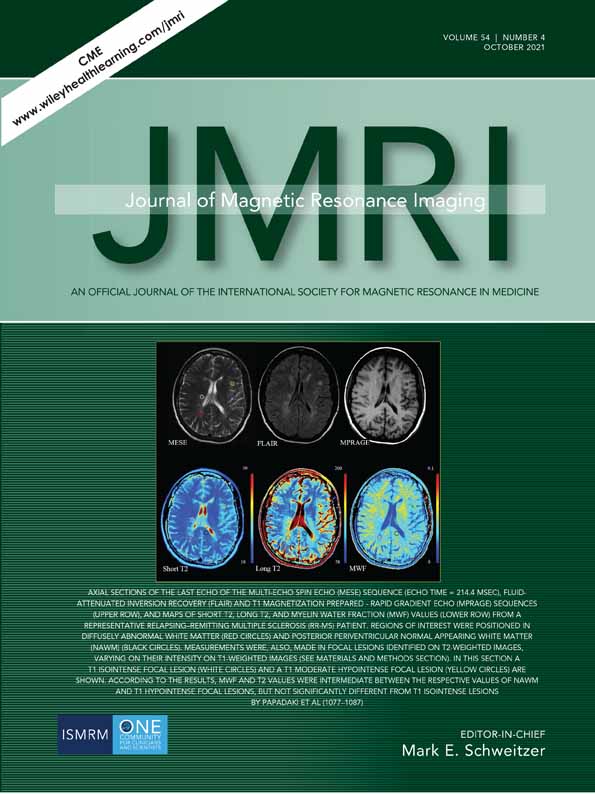Prediction of High-Risk Cytogenetic Status in Multiple Myeloma Based on Magnetic Resonance Imaging: Utility of Radiomics and Comparison of Machine Learning Methods
Abstract
Background
Radiomics has shown promising results in the diagnosis, efficacy, and prognostic assessments of multiple myeloma (MM). However, little evidence exists on the utility of radiomics in predicting a high-risk cytogenetic (HRC) status in MM.
Purpose
To develop and test a magnetic resonance imaging (MRI)-based radiomics model for predicting an HRC status in MM patients.
Study Type
Retrospective.
Population
Eighty-nine MM patients (HRC [n: 37] and non-HRC [n: 52]).
Field Strength/Sequence
A 3.0 T; fast spin-echo (FSE): T1-weighted image (T1WI) and fat-suppression T2WI (FS-T2WI).
Assessment
Overall, 1409 radiomics features were extracted from each volume of interest drawn by radiologists. Three sequential feature selection steps—variance threshold, SelectKBest, and least absolute shrinkage selection operator—were repeated 10 times with 5-fold cross-validation. Radiomics models were constructed with the top three frequency features of T1WI/T2WI/two-sequence MRI (T1WI and FS-T2WI). Radiomics models, clinical data (age and visually assessed MRI pattern), or radiomics combined with clinical data were used with six classifiers to distinguish between HRC and non-HRC statuses. Six classifiers used were support vector machine, random forest, logistic regression (LR), decision tree, k-nearest neighbor, and XGBoost. Model performance was evaluated with area under the curve (AUC) values.
Statistical Tests
Mann–Whitney U-test, Chi-squared test, Z test, and DeLong method.
Results
The LR classifier performed better than the other classifiers based on different data (AUC: 0.65–0.82; P < 0.05). The two-sequence MRI models performed better than the other data models using different classifiers (AUC: 0.68–0.82; P < 0.05). Thus, the LR two-sequence model yielded the best performance (AUC: 0.82 ± 0.02; sensitivity: 84.1%; specificity: 68.1%; accuracy: 74.7%; P < 0.05).
Conclusion
The LR-based machine learning method appears superior to other classifier methods for assessing HRC in MM. Radiomics features based on two-sequence MRI showed good performance in differentiating HRC and non-HRC statuses in MM.
Evidence Level
3
Technical Efficacy
Stage 2




